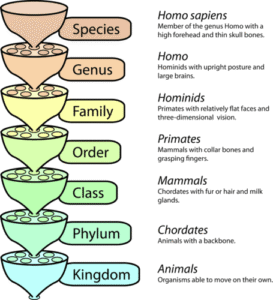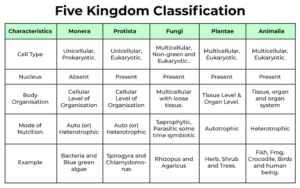Back to: MICROBIOLOGY 100 LEVEL
Welcome to class!
Hello, champ! It’s always great to have you back, ready to learn and grow. Today’s lesson is all about Characteristics and Classification of Microorganisms. Now, think about this—just like we group people into families, tribes, or classes in school based on certain features, scientists do the same with microorganisms. They study their characteristics and then classify them to better understand and work with them. Let’s learn how!
Characteristics And Classification
General Characteristics of Microorganisms
Microorganisms, or microbes, are tiny living things you can’t see with your naked eyes. They include bacteria, viruses, fungi, protozoa, and algae. Each group has special features, but they also share some general characteristics:

Microscopic Size: Most microbes are so small that you need a microscope to see them.
Simple Structure: Many microorganisms have simple body structures, especially compared to humans or animals.
Reproduction: Most reproduce quickly, especially bacteria, often by binary fission (splitting into two).
Metabolism: Like all living things, they carry out chemical reactions to get energy and grow.
Diversity: Microorganisms come in many shapes and types, living in water, soil, air, and even inside our bodies.
Adaptability: They can survive in extreme conditions—hot springs, salty lakes, frozen places, and more.
Groups of Microorganisms
Bacteria: Single-celled organisms without a nucleus. They can be good (like those in yoghurt) or harmful (like those that cause typhoid).
Viruses: Not truly “alive” on their own; they need a host to reproduce. Examples include HIV and flu virus.
Fungi: Can be single-celled (like yeast) or multicellular (like mould). They help break down dead materials.
Protozoa: Single-celled organisms that live in water or inside animals. Some cause diseases like malaria.
Algae: Mostly found in water; they use sunlight to make food and produce oxygen.
Classification of Microorganisms
Scientists classify microorganisms to make it easier to study and understand them. They do this based on characteristics like cell type, structure, reproduction, nutrition, and genetic makeup.
Microorganisms are classified into three main Domains:
Bacteria: True bacteria, including many that cause diseases.
Archaea: Bacteria-like organisms that live in extreme conditions.
Eukarya: Includes fungi, protozoa, and algae—organisms with complex cells.
And into Five Kingdoms:
Monera: Includes bacteria and archaea.

Protista: Protozoa and some algae.
Fungi: Moulds, yeasts, and mushrooms.
Plantae: Algae and other green plants.
Animalia: Includes microscopic animals like parasitic worms.
Think of microorganisms like people in a large school. You group them into classes (Kingdoms) and then into smaller groups (Domains and Species) based on their looks, how they behave, what they eat, and where they live. This helps you know who’s who!
Summary
- Microorganisms are tiny, diverse, and found everywhere.
- They are grouped by characteristics like structure, nutrition, and genetics.
- The main groups include bacteria, viruses, fungi, protozoa, and algae.
- Classification helps scientists identify, study, and control microbes.
Evaluation
- Name two general characteristics of microorganisms.
- What makes viruses different from other microbes?
- What is the difference between bacteria and fungi?
- List the three domains used to classify microorganisms.
- Why is classification important in microbiology?
Your brain is like a microscope—zooming in and understanding these tiny but powerful organisms. Keep learning, keep shining, and remember, Afrilearn is always here to help you become your very best. See you in the next class!
